Public Opinion Tracker Deep Dive: Perspectives of Teenagers and High School Parents (March 2022)
American teenagers and their parents have felt enormous turbulence and disruption during the pandemic. K-12 education was turned upside down by the far-reaching instability of the pandemic. We have seen a varied landscape of opinions, controversies and innovative proposals from people both inside and outside of K-12 education landscape.
Teenagers watched this from the front lines. We at EdChoice are fortunate to survey the American public, in partnership with Morning Consult, and have the opportunity to learn from groups who keenly feel the challenges of schooling, instruction and learning during a pandemic. This includes parents, teachers and teenagers.
Teenagers may be bearing the brunt of a double dose of turbulence right now. Those ups and downs during teenage years also include the challenges of personal growth and learning in and out of school. The demands of academic, social and emotional learning may seem like a storm at times. When that personal development as an adolescent occurs in the throes of the worst pandemic in a century, then we have the potential for a Category 5 hurricane for teens and their parents.
Time spent learning in school is accompanied by learning about yourself, friends and society. In short, teenagers are sponges, soaking up information left and right. It’s time for us to become the sponges, to listen and absorb as much as we can from the unique perspective of today’s teens and their parents.
In March of this year, and with Morning Consult, we surveyed nationally representative samples of American teens (N=1,000) and high school parents (N=1,030). This is the fourth wave of our teens survey, following administrations in August 2020, March 2021, and September 2021. It is also the first time we have asked dedicated questions to parents of high schoolers in their own survey sample.
A pattern stands out in this analysis. There is a major disconnect between teenagers and parents of high schoolers regarding many experiences, perceptions, and outlooks coming out of the pandemic.
Let’s dig into the key findings:
1. Post-pandemic, fewer teens appear to be planning to attend a four-year college after high school. Before the pandemic, 56 percent of teenagers said they were planning on attending a four-year college, either out-of-state or in-state. Currently, only 48 percent of teens are planning on attending college or a university. Attending an in-state technical/trade school experienced the biggest jump (+3 points), followed closely behind by attending an in-state community college (+2 points). Teens also expressed more interest in joining the workforce and taking a gap year, compared to how they had felt before the pandemic.
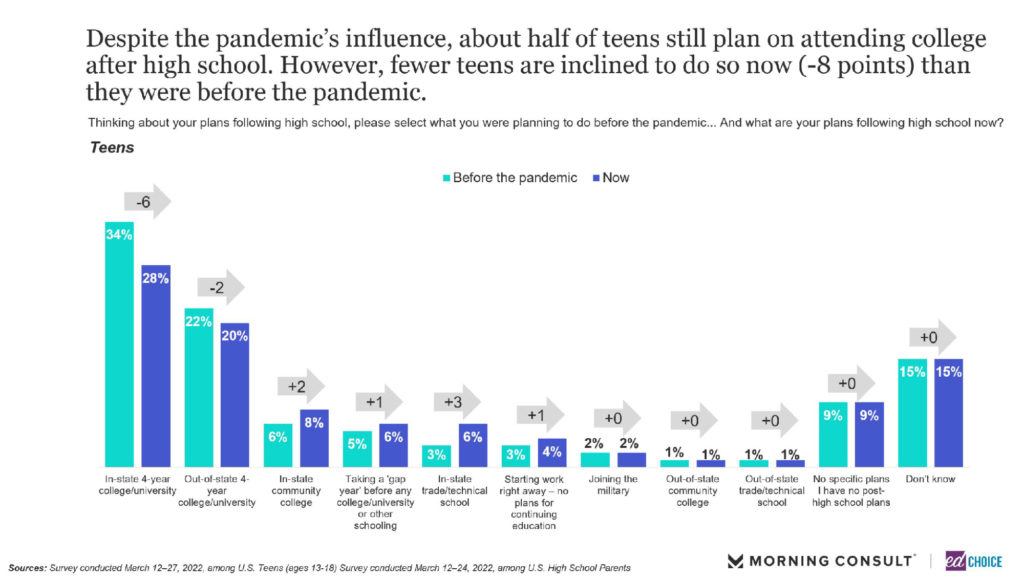
2. Seven out of 10 high school parents report their child’s plans after high school have not changed, although priorities shifted slightly since the pandemic for teenagers. Among the high school parents of children whose plans have not changed, nearly 90 percent feel very positively about their current trajectory. Of the 20 percent of high school parents who have reported their child’s plans having changed since the pandemic, three in four of those feel positive about their child’s change in plans.
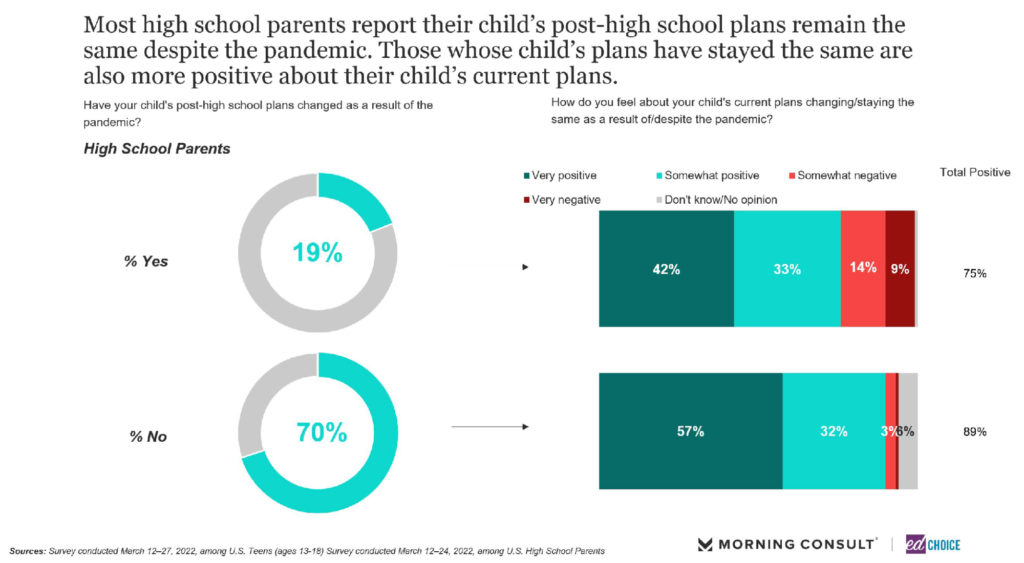
3. High school parents are more optimistic than teens about the future. Parents are more likely (+14 points) to believe their child is ready for life after high school, compared to the proportion of teenagers saying the same about their future. More than half of high school parents believe their child will be extremely or very prepared for life after high school. Teenagers, on the other hand, are less sure, with only 37 percent feeling extremely or very prepared for life after high school. One caveat to this, however, comes from teens who are planning on taking a gap year or planning to enter the work force. Their confidence when it comes to life after high school is more akin to high school parents, with 48 percent of these teenagers feeling extremely or very prepared.
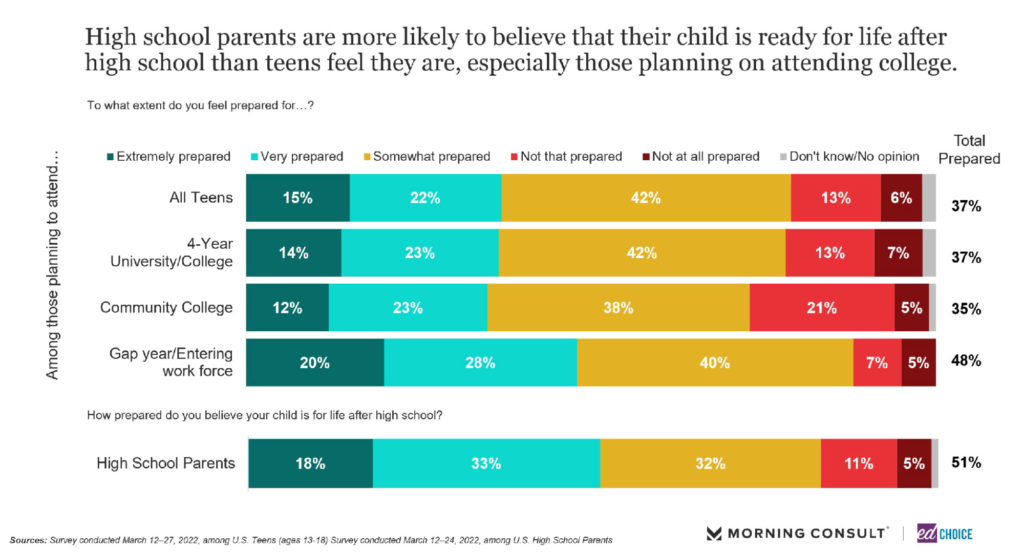
4. Teens were much more likely than parents to choose the neutral response when expressing thoughts on their future. Teens were a lot less willing than high school parents to describe their future with words like “optimistic,” “enthusiastic,” or “happy.”
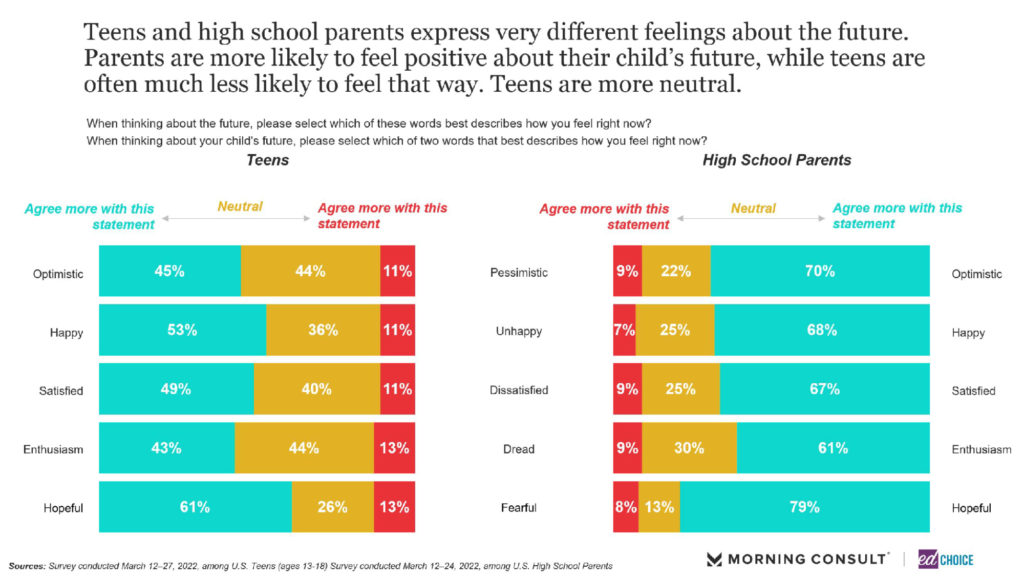
5. Teens are more likely to report that their teachers share opinions on political and social issues, compared to what high school parents say they observe. We asked both teens and high school parents if they had observed teachers sharing their views or opinions on various timely political and social topics. In every instance, teens observed their teacher expressing views or opinions at a higher rate than high school parents. Regarding masking, for example, nearly 60 percent of students said they recently observed a teacher sharing an opinion on the matter. Less than 40 percent of parents had a similar observation. The same patterns appear when asking about vaccinations (43 percent of teens vs. 28 percent of parents), political opinions (38 percent vs. 23 percent), LGBTQ issues (36 percent vs. 16 percent), religion (32 percent vs. 18 percent), and race (30 percent vs. 19 percent).
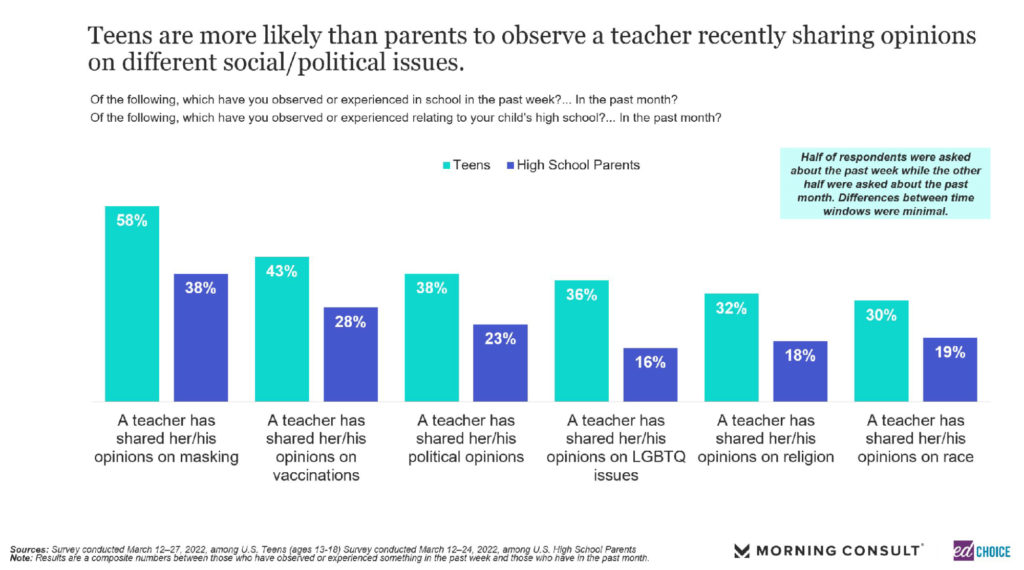
6. The majority of parents and teens believe their school is doing a good job promoting racial equality, fairness, respect, challenge, and providing supportive communications. Both parents and teens were asked questions whether their school “Treats all students equally regardless of their race or background,” “emphasizes showing respect for all students’ cultural beliefs and practices,” and “encourages all students to take challenging classes regardless of race or background.” More than 78 percent of parents either somewhat or strongly agreed with each of these statements, while more than 70 percent of teens were in total agreement with the statements. Parents and teens were also very supportive of their schools when it came to providing good support for students who need alternative modes of communication.
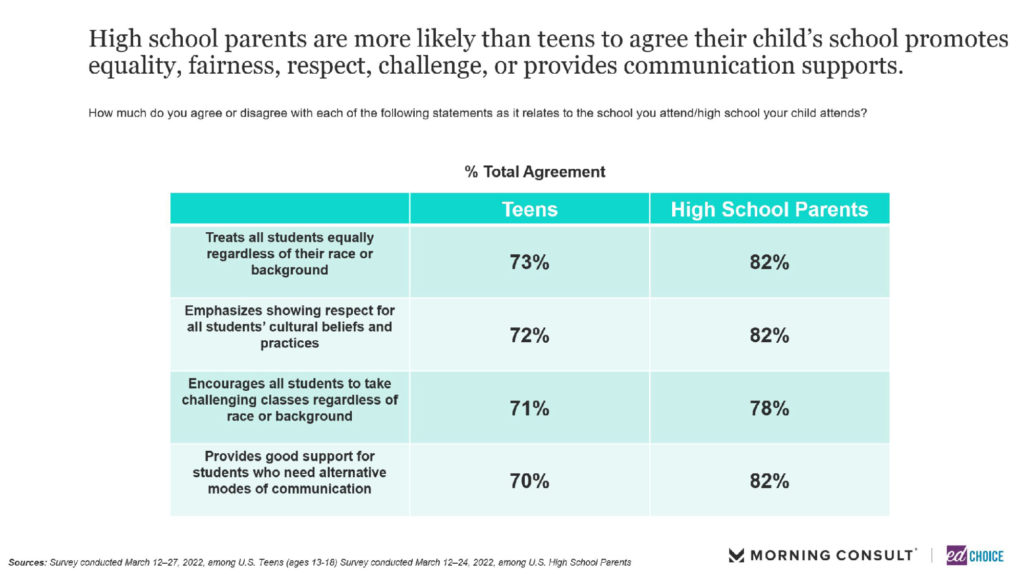
7. Teens report their classmates are likely to share their opinions on topics like masking, LGBTQ issues, and race. We found that nearly two-thirds of teens report recently hearing their classmates’ views on masking, LGBTQ issues, and politics. Roughly half of teenagers indicated they recently heard classmates’ opinions on vaccinations (57 percent), race (52 percent), and religion (48 percent).
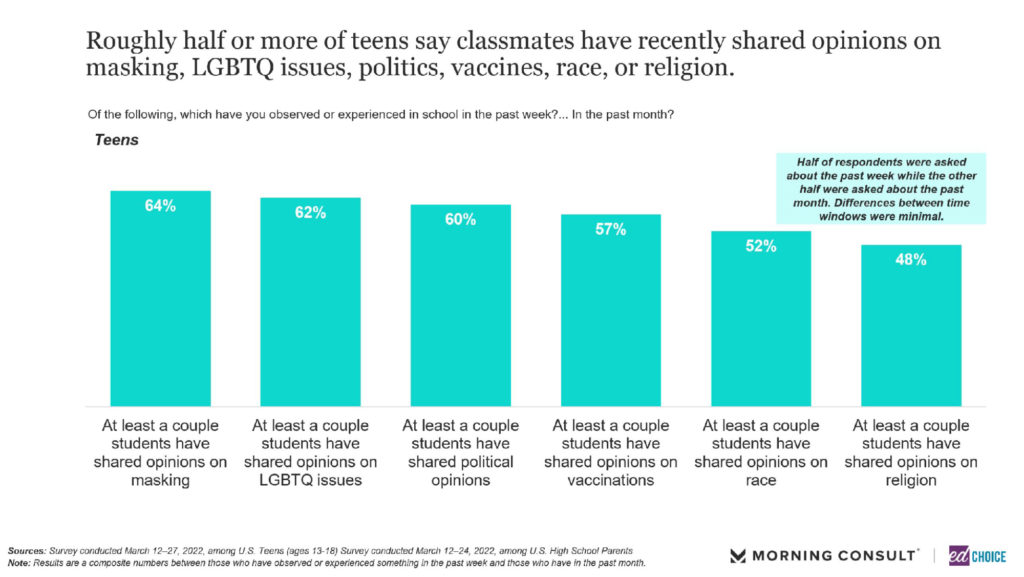
8. Social media remains the most prominent way of receiving information about current events for teens. More than 60 percent of teens said they rely on social media as a primary mode of receiving news, compared to 43 percent of high school parents. Roughly half of teenagers learn information about current events from family members (51 percent) or friends (44 percent). As for high school parents, the traditional media sources remained preferable. More than 60 percent of high school parents rely on TV news stations, newspapers, news sites, or radio. Nearly half of high school parents rely on family members for news. Forty-three percent use social media for following news.
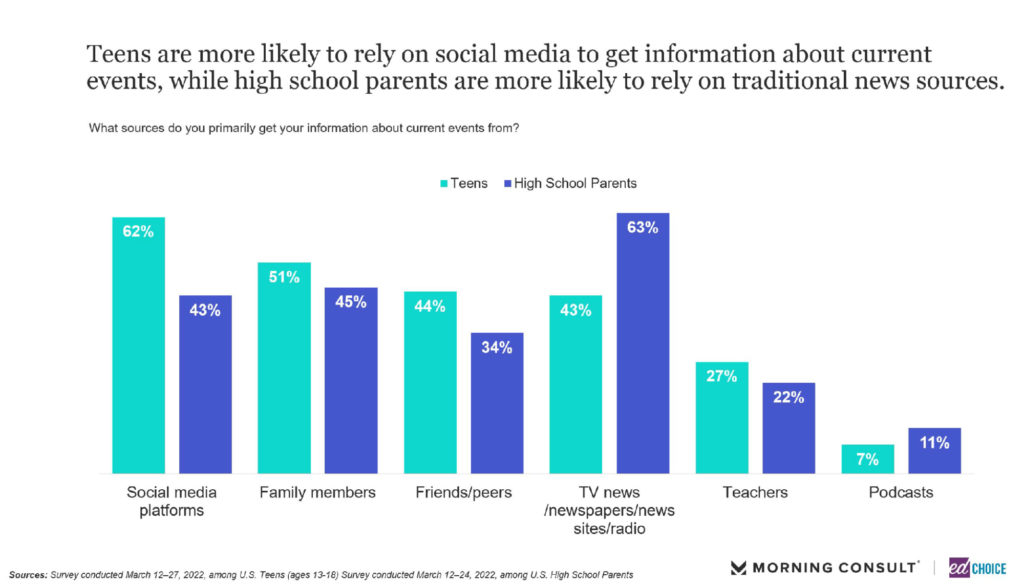
9. Improving K-12 education and higher education collectively is a top priority among teens when asked about different public policy issues. Teens also feel strongly about improving health care and dealing with climate change. LGBTQ, 9th-10th graders, and middle-class teenagers prioritized improving K-12 education more than other demographic groups. There are some overlapping priorities among teens and parents. Nearly one-third of parents prioritized improving K-12 education and improving healthcare. Special education parents stand out among high school parents – 42 percent said they prioritize reforming K-12 and higher education. However, strengthening the economy is clearly highest priority for high school parents (49 percent indicating so).
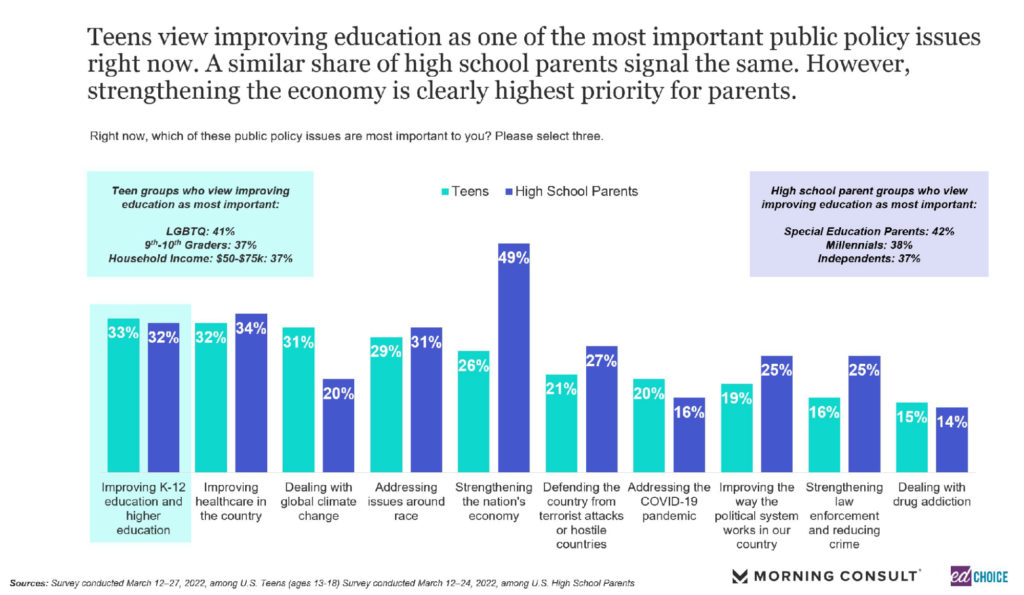
10. Both teenagers and parents believe their relationships with their immediate family have grown stronger since the pandemic began. When asked if their relationship with immediate family had become stronger, weaker, or stayed the same over the course of the pandemic, 43 percent of teens said that it had become stronger and only 15 percent said weaker. When you subtract the percentage of teens saying that it has gotten worse from those saying that it has gotten better, that makes a “net better” score of 27 points. When examining high school parents’ attitude towards the same question, the same positivity can be seen. Parents have a score of +19 points, with 33 percent of parents saying their relationships with family have grown stronger while only 14 percent believe the opposite is true.
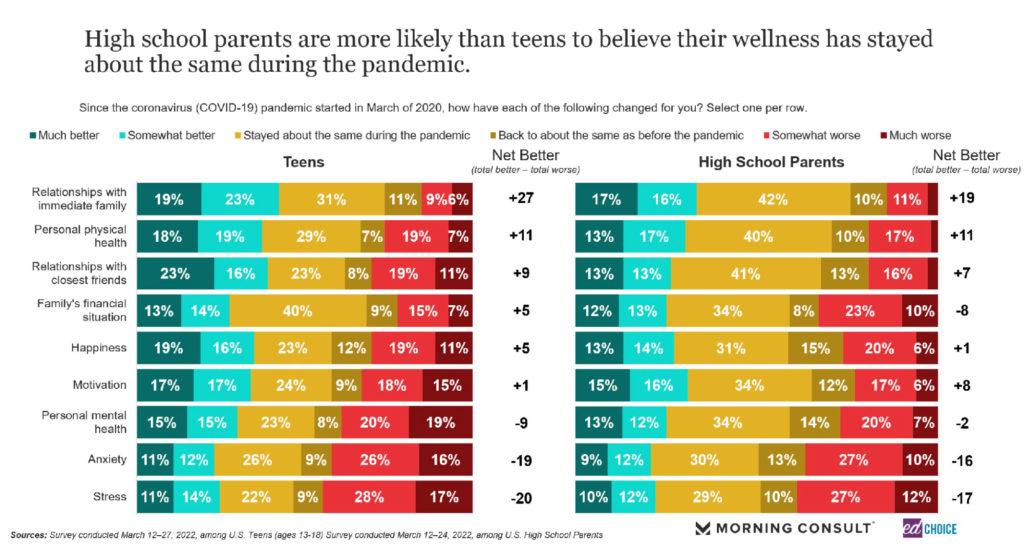
11. On average teens are relatively more likely to report feeling better now when it comes to their stress and anxiety levels– compared to a year ago. When asked if their stress had gotten better or worse during the pandemic, 45 percent of teenagers believed their stress had gotten worse, while 25 percent of teens said their stress has improved. That equals a “net better” score of -20 points for stress. Teen respondents produced a similar score of -19 for anxiety. For comparison, in March of 2021, teens’ scores for stress and anxiety were -50 and -39, respectively. Although the current snapshot indicates more teens are feeling their stress and anxiety have gotten worse as the pandemic unfolds, the trendlines are moving in a positive direction.
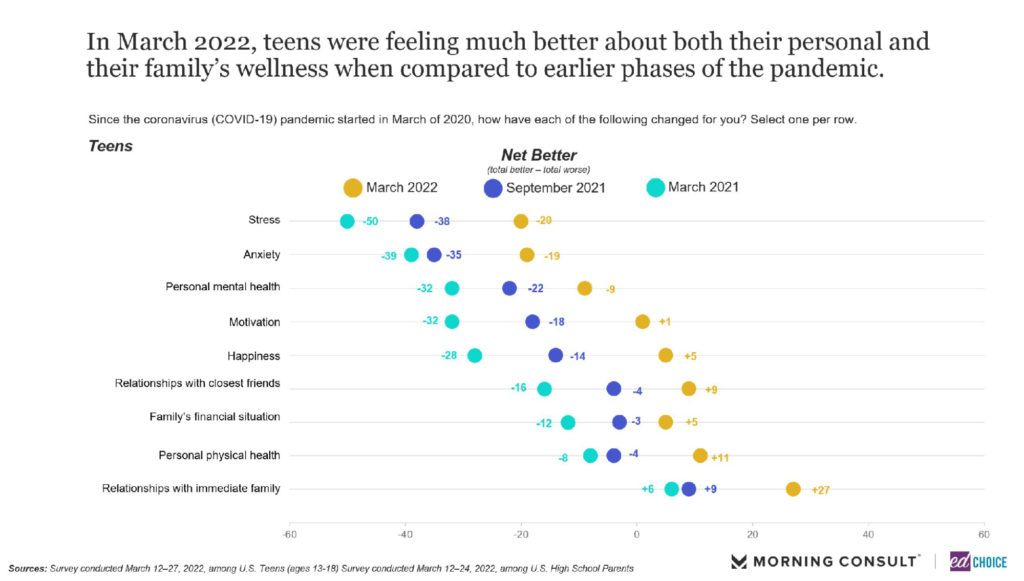
12. When broken down by demographic, male teenagers are much more likely than female teenagers to say things have improved since September. Males reported a “net better” score of +14 points while females had a score of -12 points, producing 26-point gender gap. Most notably, when broken down by race, black teens were the most likely to say things have gotten better (+19 “net better” score). The same trends can be found in high school parents. Male parents were more likely than female parents to say things have gotten better since September. Black parents scored +31 points when asked whether they believe things have gotten better. When broken out results by community type, urban parents were much more likely than rural parents to believe things have changed in a positive direction. We observed a 34-point gap between those two groups.
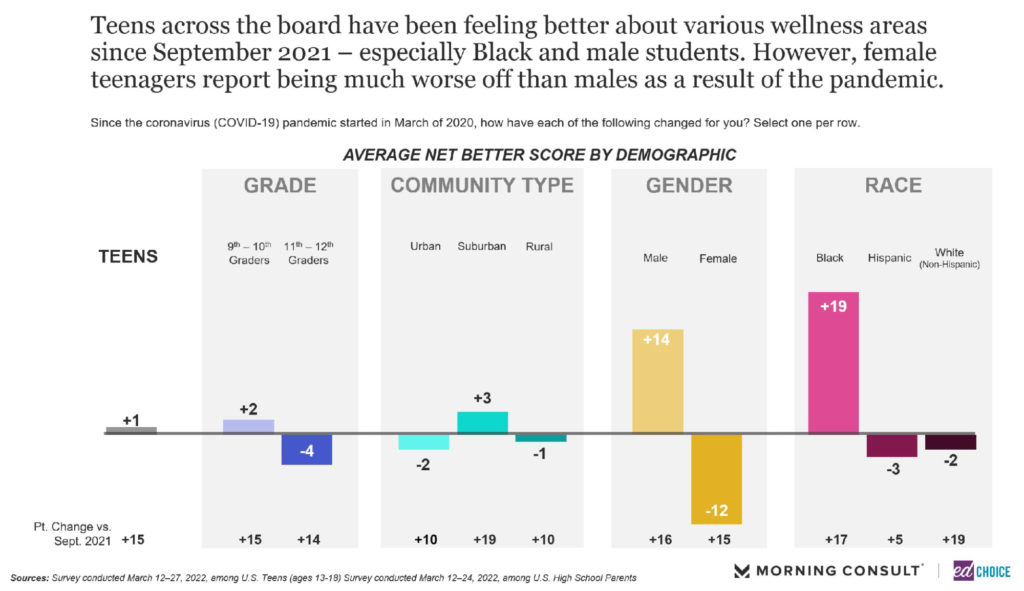
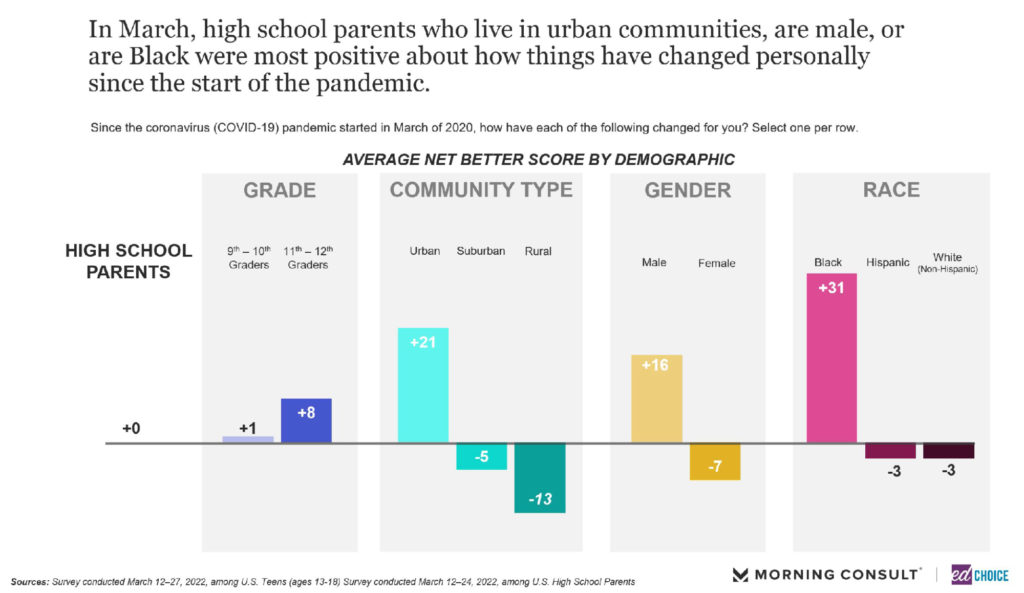
13. More than half of America’s teens say they would like to learn at home at least one day per week. When this question was posed to teens in March of 2021, slightly more than one-third of teens said they preferred to attend classes in-person 5 days a week. In the current wave just less than half said the same. In March of 2021, more than 1 in 5 teens preferred to have fully virtual/remote schooling, that proportion has now decreased to 1 in 10 teens – unchanged since the start of the school year.
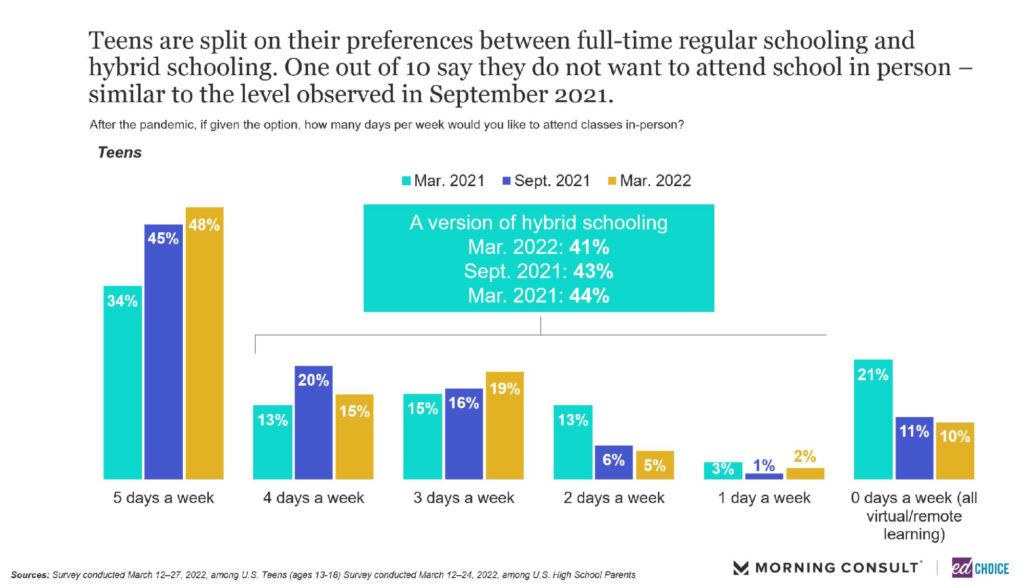
14. Teens and parents are somewhat divided when asked which supports would be most useful for education currently. Student resources, extracurricular activities, and transportation to and from school were the top three supports named by teens. Parents were much more likely than teens to name tutoring, internships, and mentoring as sought-after resources to help aid learning. Interestingly, extracurricular activities and transportation were less of a priority among parents when compared to tutoring, internships, and mentoring.
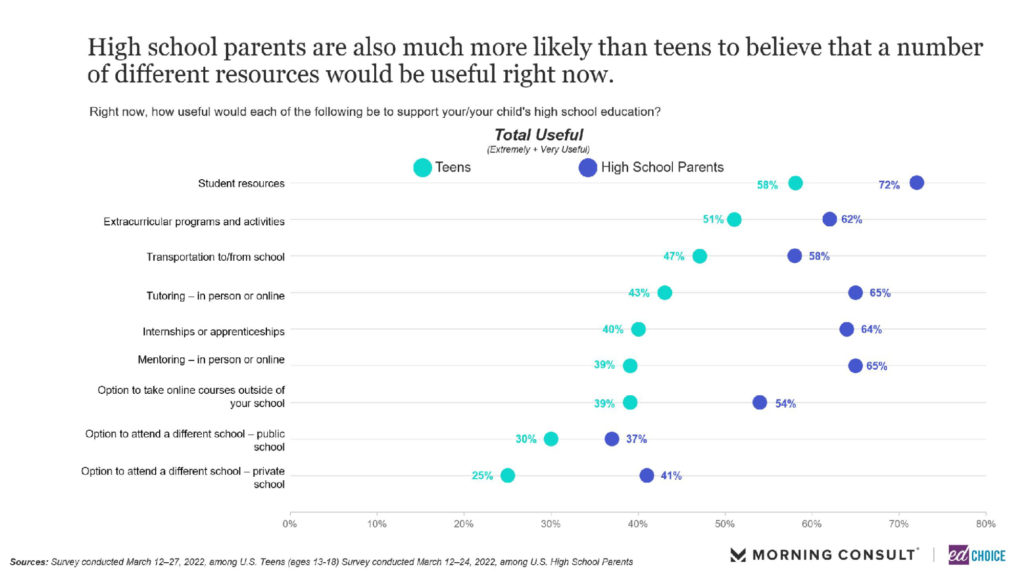
Visit the EdChoice Public Opinion Tracker site to access past reports, crosstabs, questionnaires, and our national and state dashboards. All are updated monthly. We also provide a more in-depth description of our research and survey methods.
Our K–12 education polls archive is updated on a rolling basis, roughly a few times each month. Please don’t hesitate to let us know if we are missing any surveys, or if there are accidental errors.






